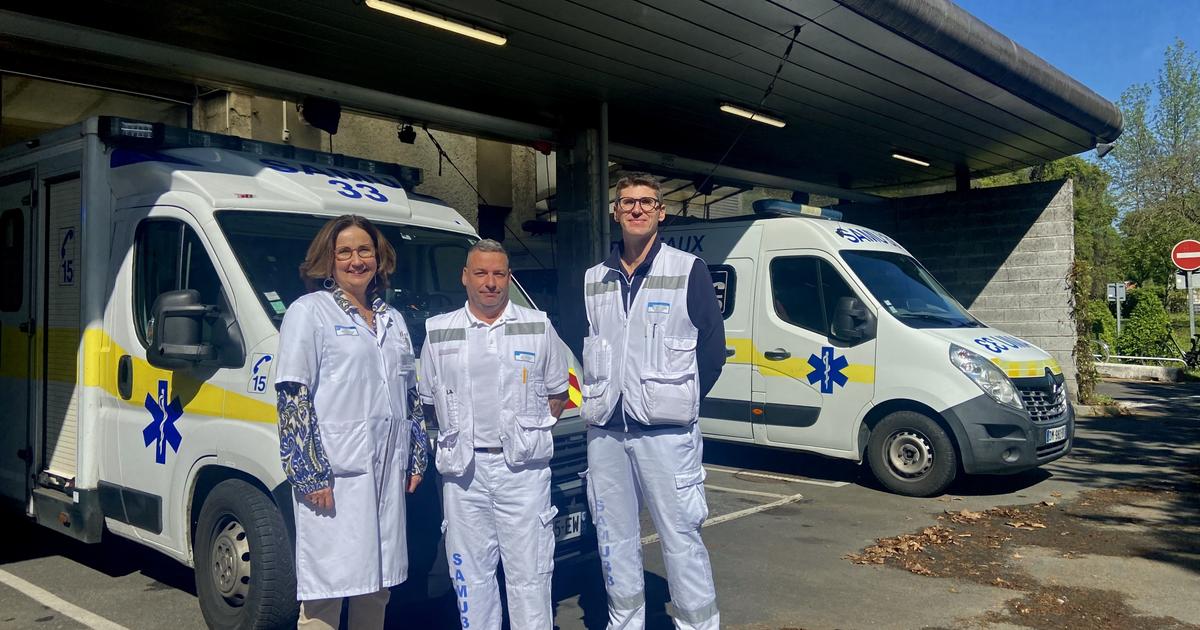Le Figaro Bordeaux
Since the beginning of March, she has been traveling the roads of Gironde for four emergency reasons: traumatic or non-traumatic pain, hypoglycemia and chest pain not suggestive of a heart attack. A small
“revolution”
of the Samu de la Gironde, the mobile paramedical hospital unit (UMHP) travels without a doctor. A development permitted by a decree of December 29 and a first in New Aquitaine which has the virtue of better distributing emergency forces, plagued by understaffing.
“Previously in regulation, we could send a town doctor for atypical pain, falls or hypoglycemia. But we are now missing
general practitioners
who make these visits
,” explains Catherine Pradeau, the deputy doctor in charge of Samu 33. Without this option, but still facing 2000 to 2500 calls per day for three regulating doctors and three emergency doctors during the day (and two per shift at night), the service has no choice but to reorganize itself.
Confined to a restricted sector of the urban community of Bordeaux in order to get its bearings, this UMHP is based on a nurse and an ambulance driver. Their dispatch in pairs to the field represents
“a new string to the Samu 33 bow to improve patient comfort”
. In other words: this intermediate level makes it possible to have the right caregiver in the right place, to decongest flows and to
“limit the patient's loss of luck by calming their pain via first aid
,” explains Catherine Pradeau. While this special unit takes care of patients without
a priori
life-threatening emergency, emergency doctors remain available for emergencies. An area of optimization which makes it possible to
“avoid a deterioration of the response due to lack of personnel”
, already notes Emmanuel Degonde, in the position of regulatory doctor at the time of our meeting.
Skills enhancement
“This UMHP is a very good thing for removing doubts. On an intervention like this, the presence of the doctor on site is not justified"
, analyzes second lieutenant Rémi Marzat, a firefighter nurse (ISP) called in duplicate for an intervention in the Bordeaux-Bègles district . A few moments earlier, Alexandre Marguinaud and Stéphane Le Borgne, the UMHP nurse and paramedic, carried out a clinical examination of the patient suffering from mild chest pain. Measurements and an electrocardiogram (ECG) transmitted live to the regulating doctor by a multiparametric monitor connected to the emergency room before the departure of the special unit.
“With experience, the first look at the patient can allow us, without diagnosis, to know if it is serious and to rely on the paramedic to go as quickly as possible
,” explains Alexandre Marguinaud. If necessary, medical reinforcement is immediately requested and deployed towards the special unit.
For the nurse, aged 38 and trained in anesthesia since 2016, this new operation represents
“a big step forward”
which
“changes a lot”
in everyday life. In the absence of the doctor - whose presence is obligatory in a Smur - his skills in questioning and clinical examination are recognized; while the know-how of ambulance drivers, which extends to knowledge of all emergency pathologies, is better valued.
“Before we did not use all the paramedical potential
,” summarizes Alexandre Marguinaud. Stéphane Le Borgne agrees:
“This work in pairs on the ground changes the positioning in the team. I find that we gain autonomy and make full use of our abilities, which is rewarding.”
Efficiency
In the emergency room, the emergency doctor remains far from being the fifth wheel of the carriage. He remains in control of the diagnosis and the decision to be made for the patient, which he communicates to the special unit by telephone. And his presence at the University Hospital allows him to directly notify the department concerned in order to prepare for the patient's reception during transport. Better orientation on arrival which represents a gain
“in comfort”
for the patient and
“in efficiency”
for the Samu 33 teams, welcomes Catherine Pradeau, the deputy doctor in charge of the service.
The activity of this special unit, triggered two to three times a day since March and which is not intended to replace the Smur, should increase in strength. The service's eligible staff, made up of 36 nurses and 26 paramedics, must be trained in five additional causes of departure by the end of the year. As for those responsible for Samu 33, they intend to release funding as soon as possible which would make it possible to recruit and assign
at least
a permanent team to this mission.

